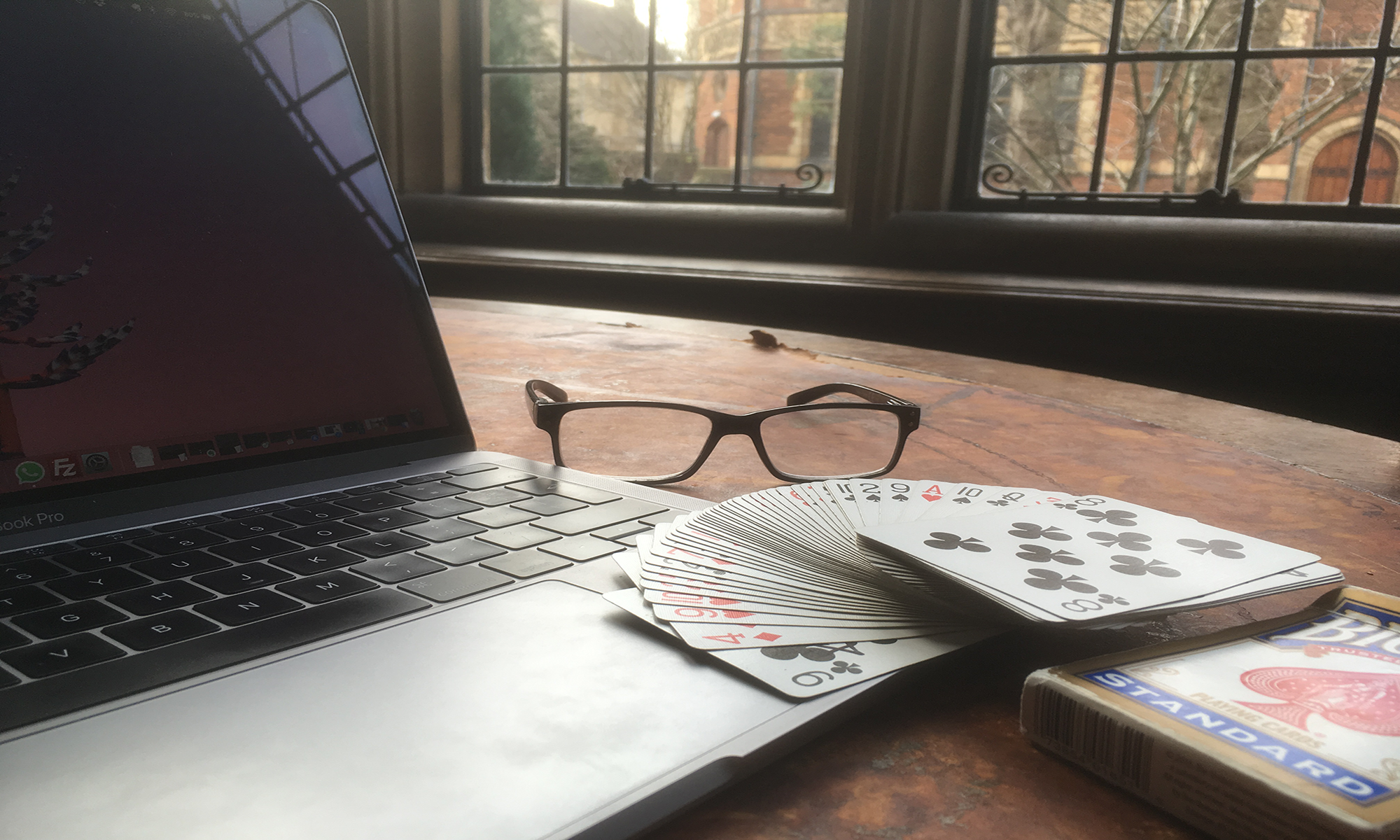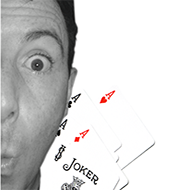
Until a few years ago, the finale of my magic and circus act was a rola-bola routine. The rola-bola is a plank of wood and a tube. The plank is laid across the tube like a see-saw and then you step on to it, one foot at each end and maintain your balance by wobbling back and forth. I took it up a level, I used three planks with blocks in between them and I juggled swords on top. It was my finale, after all!
The extra blocks and planks meant that it was too high to step onto the top plank, so I had to jump. I would lightly hold each end of the top plank to stop everything falling over, then let go, leap and land on top before it all collapsed. I was doing it three or four times a week so I was confident every time. Or nearly every time.
I remember the feeling I had every time I did my first show after coming back from a holiday. I would get to that point in the show and I would be standing ready to leap. But I hadn’t done the jump for two weeks. Would I still be able to nail it? I did, every time, but it still felt like a leap of faith.
We can be nervous about taking time out for many reasons: will I lose my edge, will people forget about me, will I lose momentum?
But that shouldn’t stop us. The benefits of taking time out are too great.
Jumped or Pushed?
Sometimes we choose to take time out, sometimes we have no choice. But whatever the reason, we can still choose to make it a valuable time.
It might be a day off, two weeks of virus-induced self-isolation or a six month sabbatical. They can all be beneficial.
Four benefits of a break are:
- Rest and recuperation
- Reflection and evaluation
- Consolidation and embedding
- Adventure and growth
Put Your Feet Up
Life in today’s world is exhausting. You can’t run and run without rest. Relax, read a trashy novel (I’m addicted to Jack Reacher at the moment), get some extra sleep.
Mirror Mirror on the Wall, What is the Meaning of it all?
I’m a huge advocate of regular reflection. Why I am doing what I am doing? What for? Is it still working? Could I do it better?
I love useful routines and habits that keep us moving through the tough times and enable us to get things done. But, if you don’t keep your eye on it, a routine can turn into a rut. It is good to evaluate your routines regularly to check whether they are still serving you well. Maybe you have moved on a bit and need to develop new routines and habits for the next bit of your journey?
Taking a break gives you a chance to ask these questions.
Muscle Memory
Anyone who has done any dance, martial arts or indeed magical sleight of hand will attest to the phenomenon of muscle memory after a break.
You spend a couple of hours practicing a new move and you just about learn it. The next day you come back and suddenly you can do the move much more easily. What happened when you were asleep? I don’t know, but I know it works!
The same can be true over a longer break. You can take time to mull over things that you have heard, training you may have taken, books you have read and let them embed themselves before launching yourself back into the world in a more effective way.
Going on an Adventure
You don’t have to climb a mountain or explore a rainforest, unless you want to. But taking time out gives the chance to stretch yourself, get new experiences, meet new people. As a result you can exercise your physical, mental and spiritual muscles. And when you exercise muscles they get stronger.
You can pick up new skills, new material, new relationships. You can develop new perspectives, new vision and new possibilities.
Or, in Four Words…
Breakfast
Breakout
Breakdance
Breakthrough







